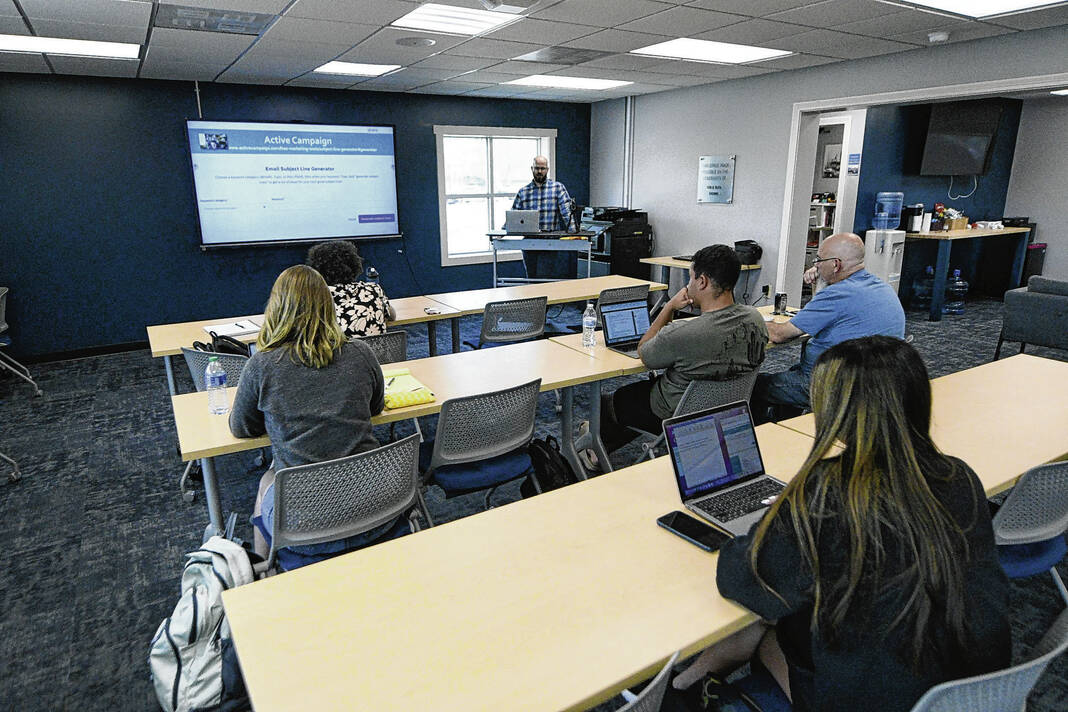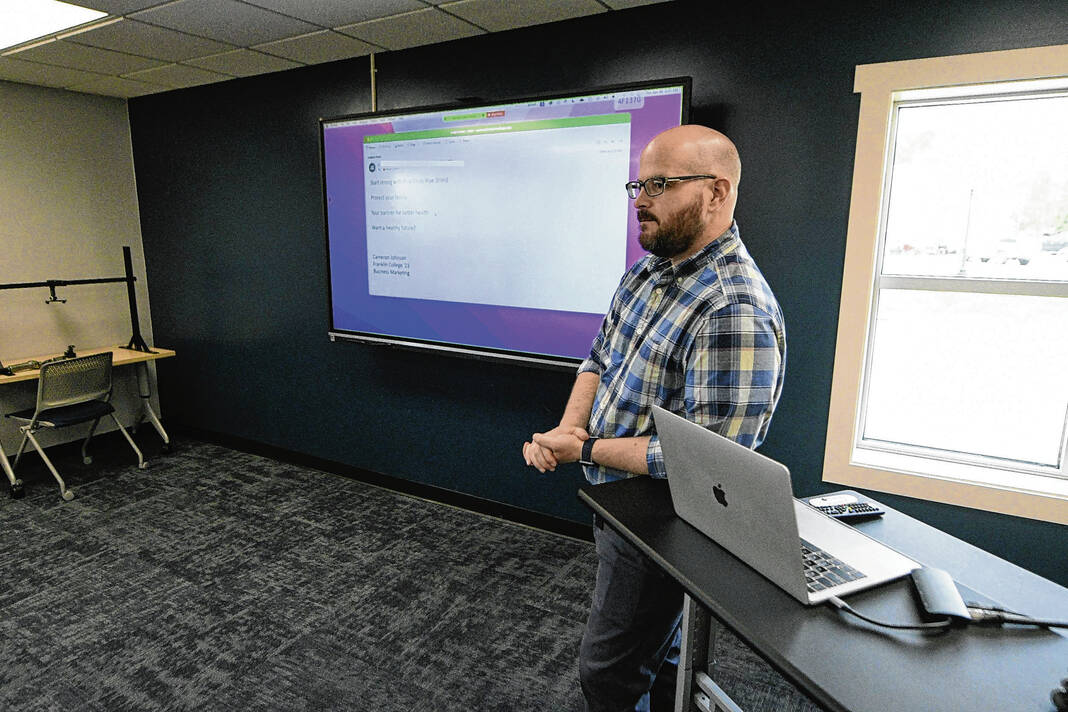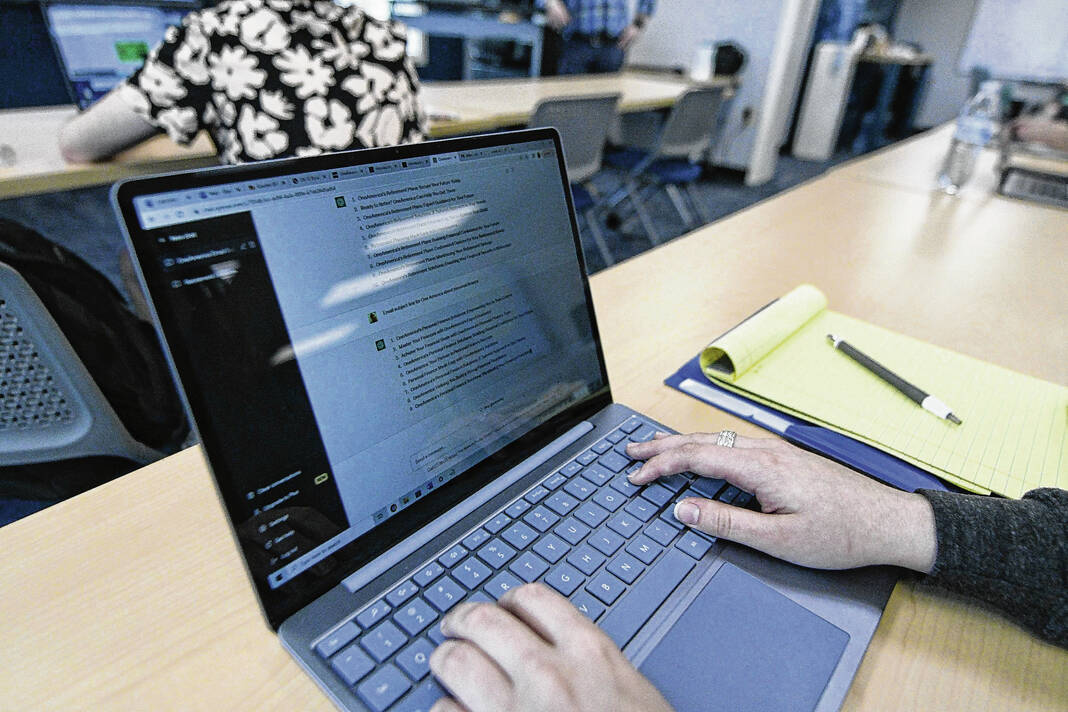It’s an artificial intelligence software capable of manufacturing an essay from scratch in a matter of seconds. But instead of barring students from using ChatGPT out of fear of academic dishonesty, some local educators are encouraging their pupils to explore the ways the software can make them more productive.
In Franklin College’s “Digital Marketing and Salesforce Fundamentals” class, students used the software to create email subject lines alongside subject lines they created themselves. Their peers would then guess which ones were created by ChatGPT and which were a conception of the human mind. Several students guessed incorrectly.
Andrew Rosner, the college’s director of digital fluency, teaches the class, and said the platform can revolutionize not only academia but any field that involves content creation.
“I think it’s a really neat tool, but obviously it has its limitations. All in all, it’s something that can be helpful when viewed and utilized in the right way,” Rosner said. “I think what intrigues me most from a productivity standpoint, is what efficiencies this tool creates for users and how we can better utilize our time saved by using this tool.”
San Francisco-based artificial intelligence company OpenAI released ChatGPT on Nov. 30, and it reached 100 million users in January. Since then, OpenAI leaders agreed to a $10 billion deal with Microsoft, which is now integrating it into Microsoft Office software and the Bing search engine, according to MIT Technology Review.
ChatGPT is one of many artificial intelligence, or AI platforms. AI has been around for decades, and other AI content generators have stirred up recent controversy. In March, widely circulated images appeared to show former President Donald Trump resisting arrest. Those images were fabricated by AI. Earlier this month, an AI model generated a song, “Heart on My Sleeve,” using the voices of popular artists Drake and The Weeknd. That song has since been yanked from streaming platforms after Universal Music Group, which releases music for both artists, invoked a copyright violation, according to NPR.
ChatGPT uses natural language processing, pulling information from billions of webpages and using a predictive model to string words together. It has its limitations, however.
“One of the first ones is accuracy,” Rosner said. “The information fed to the ChatGPT model stops at Sept. 2021. If you were to ask who won the 2022 World Cup, it would not know that information because it hasn’t been fed into the model. Bias is an issue as is the case with all artificial intelligence. Data has to be put in it by a human, and that comes with biases. Some bias can creep into the data fed into this model.”
Students in Rosner’s class, who also used ChatGPT earlier this semester to brainstorm search engine optimization keywords, have mixed opinions on the platform.
Sophomore Brooke Stephens said it can be tempting to use ChatGPT to do your work for you, but it is harmful to use it that way.
“I use it for a few different classes and an internship for inspiration,” Stephens said. “It can be hard to navigate what to reword. Seeing something automatically generated, it’s super easy not to change too much, but you have to use it as a baseline and transform it into your own words. I’ve learned it’s a good tool for developing key words in email marketing or generally content, but it’s not necessarily the be-all-end-all.”
Jett Klene, a senior, said he had concerns about academic integrity if professors aren’t able to spot ChatGPT-generated papers.
“There are advantages to doing things quickly and easily, but I’m worried about education as a whole if there aren’t good ways to check whether someone is using ChatGPT. It can do assignments in seconds,” Klene said. “I hope it doesn’t replace the human element of thinking. I don’t want people to be too shallow, but if it’s used as a tool to get tasks done and do deep work, it can be very useful to help figure things out.”
University of Indianapolis business professor Karl Knapp encourages students in his Data Analytics and Supply Chain Management class to use ChatGPT as a launching pad for initial drafts of assignments, and compared its inception to the invention of the calculator, which increases productivity in math courses.
“I’ve been encouraging (students) to use it. I feel like it’s a required tool now, and in many ways, it can increase productivity. But you can’t just use it to do your job, you need to know what you’re doing. Anyone who’s an expert knows it’s not perfect and not complete in whatever answer it gives you,” Knapp said. “People will have to maintain expertise and know when it gives you the wrong answers.”
Educators in Johnson County public schools are reviewing how to approach the new platform. Some students have used ChatGPT to complete assignments at Whiteland Community High School, and educators are navigating how to approach those situations on a case-by-case basis, Principal Benji Betts said in an email.
Greenwood Community School Corporation Superintendent Terry Terhune said school leaders are having conversations about ChatGPT, but haven’t made any decisions about if it will be incorporated into any curriculum or how to best preserve academic integrity.
At Center Grove Community School Corporation, administrators are discussing ways to help students understand ChatGPT and use it in constructive ways, said Katie Brennan, coordinator of connected learning.
“This is the future,” she said. “AI has been around for a while and it will continue to be very relevant as students grow up and enter their post-secondary lives in either college or the workforce. Our job is to prepare them to use AI in a way that is sensible and a way they can discern the information they’re getting.”
AI tools like ChatGPT can be used to write a first draft, which students could analyze and rework using their own knowledge of a subject, Brennan said.
“Students can go back and check the draft for accuracy, bias and tone. Then, the students can use those discernment skills, instead of taking it at face value, to see if it’s accurate and correct it. It will teach them to look at it through a different lens.”
Teachers can use Turnitin, a web tool, to check for plagiarism and can require students use Google Docs, which tracks revisions students make during the course of completing an assignment. If educators embrace, rather than shun the use of AI platforms like ChatGPT, it’s more likely students will be able to use them in a more responsible way, said Amanda Moore, an innovation coach at Center Grove schools.
“It requires us to change our current practices a little bit and check for student understanding,” Moore said. “It’s the difference between trying to block access and teaching students how to use AI in a successful way. The reality is, AI is going to influence every industry. If students are able to use it well and ethically, they’re much more likely to use it successfully.”









